Exploring Tranquil Wellness Residences in Dubai
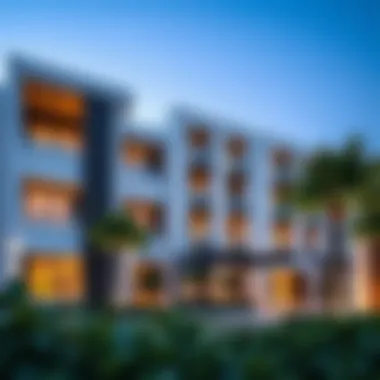
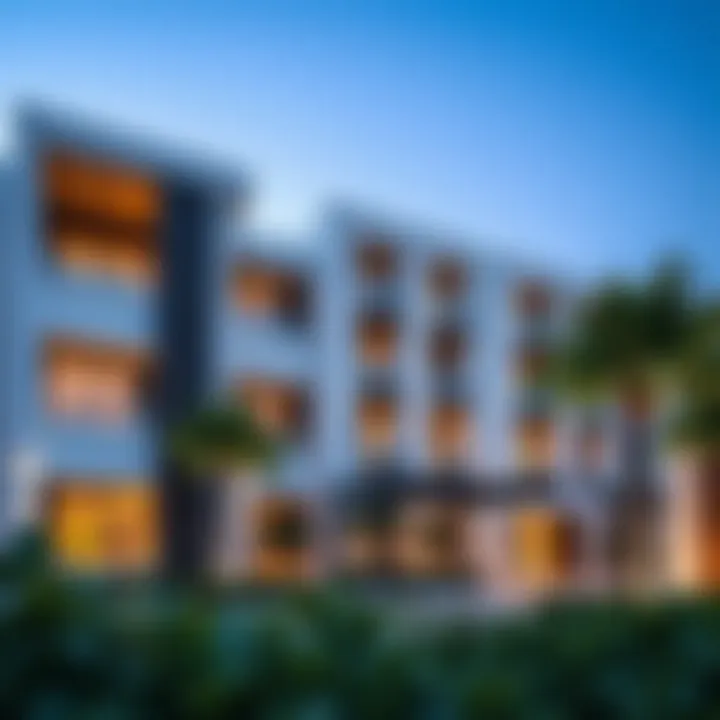
Intro
The concept of wellness has risen to considerable prominence in recent years, reflecting a shift towards environments that foster mental and physical health. Urban living, particularly in metropolises like Dubai, can often lead to increased stress and anxiety. It's in this backdrop that the notion of tranquil wellness residences has gained traction. These residential spaces are designed not merely as homes but as havens that encourage a healthier, more balanced lifestyle.
In the bustling landscape of Dubai's real estate market, investors and potential homeowners are paying close attention to developments that prioritize wellness. These residences go beyond traditional living spaces; they incorporate features such as green spaces, holistic health amenities, and architectural designs that promote serenity. They have become the answer for those seeking peace amid the chaos of urban life.
This article will explore various aspects of tranquil wellness residences including their architectural significance, wellness features, and how these elements contribute to residents’ well-being. Furthermore, we will delve into investment opportunities within this niche, analyzing current market trends along with future projections that underscore the growing demand for these properties. All these factors amalgamate to paint a comprehensive picture of a burgeoning sector in the real estate market.
Prelude to Tranquil Wellness Residences
In today's fast-paced urban lifestyle, the quest for tranquility and well-being stands paramount. The rise of tranquil wellness residences reflects a significant shift towards living spaces designed with health and peace in mind. These residences do not simply provide shelter; they promote an overall lifestyle that integrates physical, mental, and emotional wellness into daily routines.
Definition and Concept
So, what exactly are these tranquil wellness residences? At their core, they are living environments that emphasize healthful living. The design and functionality of these spaces cater to self-care, relaxation, and a connection to nature. Think of them as havens where individuals can step away from the chaos of city life, embracing features that enhance their quality of life.
Picture a home infused with natural materials, biophilic design elements like indoor gardens, and spaces that encourage physical activity and mindfulness. These elements work together to create not just a house but a sanctuary for both body and mind. The aim is to cultivate spaces that foster a sense of community while promoting personal health. The concept revolves around balance—achieving harmony between urban living and natural elements.
Historical Context
To truly grasp the significance of tranquil wellness residences, one must take a look back at their origins. The idea is not entirely new; many ancient cultures understood the importance of integrating their living spaces with the environment. In fact, ancient Greeks and Romans valued spaces that allowed sunlight and fresh air to flow freely, recognizing this connection as essential to well-being.
Fast forward to the modern era, and we see an uptick in interest for wellness living over the past few decades. Motivated by the rise of urbanization and the ensuing stress of city life, architects and developers began to rethink how homes are built. The late 20th century introduced concepts like eco-friendly living and sustainable architecture, laying the groundwork for what we now see as wellness residences. This historical perspective helps contextualize today's demands—where the home is not just a place to live, but a crucial component of our overall health strategy.
Overall, the introduction of tranquil wellness residences embodies a paradigm shift in real estate and lifestyle. With a deeper understanding of the interplay between living spaces and personal health, we can better appreciate the burgeoning market for these residences and their impact on urban living.
Architectural Design Elements
The architectural design of wellness residences plays a pivotal role in creating a conducive living environment that promotes health and well-being. In an era where urban dwellers face numerous day-to-day stresses, the significance of these residences goes beyond mere aesthetics. The elements involved in architectural design can enhance physical comfort, mental clarity, and social connectivity, effectively turning a living space into a sanctuary. Therefore, understanding these design elements is paramount for potential investors and developers seeking to capitalize on this booming market.
Natural Light and Space
One of the most essential components of architectural design in wellness residences is the incorporation of natural light. Not only does natural light improve the aesthetic appeal of spaces, but it also has profound effects on the residents’ well-being. Studies show that ample natural sunlight can help regulate circadian rhythms, which are crucial for quality sleep. Moreover, natural light makes spaces feel larger and more open, leading to an enhanced sense of freedom and relaxation.
Building designs should prioritize large windows, skylights, and open floor plans that maximize light intake. Spaces such as living rooms and meditation areas can benefit significantly from an abundance of sunlight, helping residents feel more energized throughout the day.
"Natural light is not just a design element; it’s a health necessity. It fosters a sense of connection with the outdoors, enhancing mood and motivation."
Furthermore, the layout of spaces should consider flow and openness. Stuffiness can easily dampen spirits, thus, a strategic approach to room sizes and arrangements is vital. Open-concept designs can encourage social interaction while offering intimate spaces for solitary activities, striking a balance between community and individuality.
Sustainable Materials
Building wellness residences with sustainable materials is not just a trend; it’s a necessity. As environmental consciousness rises, many buyers expect their homes to reflect eco-friendly practices. Using materials like recycled wood, bamboo, or low-VOC paints can significantly lower the carbon footprint of buildings.
The benefits extend beyond aesthetic values. Sustainable materials often feature better durability and lower maintenance costs, ensuring that properties maintain their value and appeal over time. For investors, this selection communicates responsibility and modernization, tapping into the growing demographic that prioritizes environment-friendly living.
When engaging with architects or contractors, it’s wise to inquire about the materials being used. Prioritizing certified materials or those that possess green certifications can provide a competitive edge in the market. It's not merely about being trendy; it’s about aligning with the values of a conscientious consumer base.
Integration with Nature
Bringing the outdoors in is another crucial architectural design element. Properties that effectively incorporate nature evoke a sense of tranquility and calmness. This might include features like vertical gardens, natural water features, or balcony designs that allow for greenery. These practices not only beautify a space but also contribute to biodiversity and enhance air quality.
Additionally, designing residences with outdoor spaces for activities such as yoga, meditation, or simply relaxation further fosters a connection to nature. The sight and sound of nature have proven therapeutic benefits that can alleviate stress and improve mental health.
Ample use of landscaping and natural pathways outside the residence can promote a sense of exploration and adventure, which is increasingly beneficial in today’s urban settings. For the mindful resident, these spaces allow for quiet reflection and a recharge in serene settings, reinforcing their commitment to wellness living.
Integrating these architectural design elements effectively will offer significant appeal to potential buyers, providing a competitive edge in a rapidly evolving market for wellness residences. Preemptively considering the psychological and physical benefits will not only serve the residents' health but also bolster property value and desirability.
Wellness Features
In today’s fast-paced world, wellness features in residences have become essential not just for comfort but for overall health. These features are more than mere additions; they serve as the backbone for a lifestyle that prioritizes well-being. For investors, understanding these elements can provide insights into their significance in attracting potential buyers amid a competitive real estate market.
Fitness and Activity Facilities
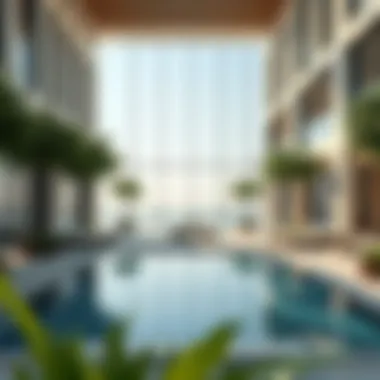
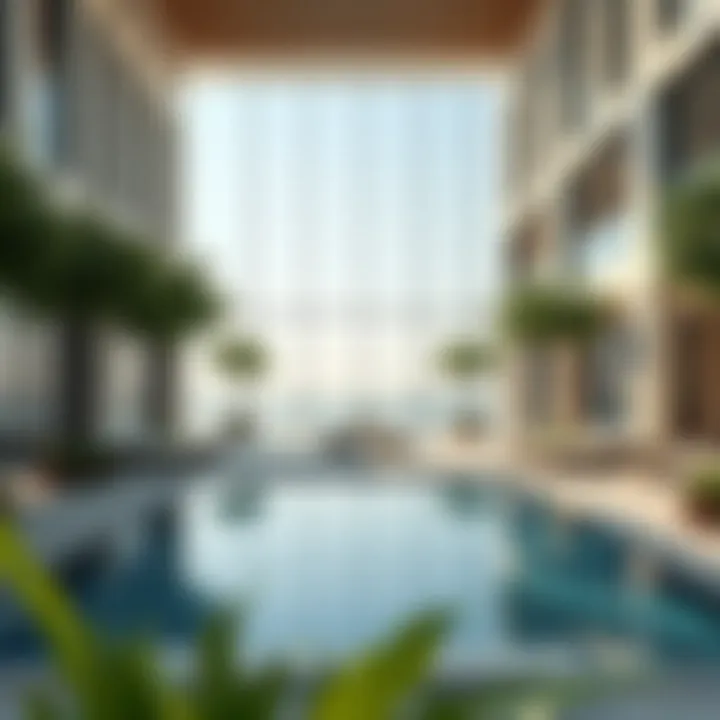
A well-designed fitness and activity facility is crucial in wellness residences. These areas foster a sense of community and encourage active lifestyles among residents. When you think about it, these spaces need to be more than just a gym with a few machines. They should encompass activities that cater to diverse interests. For instance, a good facility may include:
- Yoga and Pilates studios for those seeking mindfulness through movement.
- Outdoor workout zones that provide fresh air along with exercise equipment.
- Group classes that not only promote physical health but also social bonds among residents.
Many successful developments have integrated multi-purpose spaces, allowing residents to participate in various activities throughout the day. This diversity not only fosters engagement but also contributes to the physical health benefits that can significantly reduce chronic illnesses. A recent study found that regular exercise offered in these facilities translates to improved mental clarity and a lower risk of depression, which are vital in today's urban living environments.
Spa and Relaxation Areas
Spa and relaxation areas are where tranquility meets rejuvenation. These spaces are critical in the urban landscape where the hustle and bustle can weigh on mental health. Incorporating elements like:
- Saunas and steam rooms to encourage detoxification.
- Massage therapy rooms designed to melt away stress.
- Zen gardens or quiet lounges that promote calmness and meditation.
People are increasingly realizing the importance of taking time out for themselves, especially in a busy city like Dubai. Consider that a beautifully designed relaxation area not only adds value to a property but acts as a selling point for those buyers seeking a retreat from the stresses of daily life.
The mere presence of spa facilities has shown to enhance the overall satisfaction of residents, which might tilt the scales in favor of purchase decisions.
Mindfulness Spaces
Mindfulness spaces are relatively new in the architecture of wellness residences, but their importance cannot be overstated. These areas offer a sanctuary where individuals can escape the noise of everyday life, encouraging residents to spend time in reflection and meditation. Features often include:
- Dedicated meditation rooms equipped with calming decor.
- Nature integration, such as indoor plants that enhance air quality and create a serene atmosphere.
- Workshops on mindfulness and well-being, fostering a deeper understanding and practice amongst community members.
The rise of interest in mindfulness has led developers to take this concept seriously, creating environments conducive to personal growth and emotional resilience. Research indicates that spending even a few minutes in mindfulness can significantly affect stress levels and emotional health.
In summary, the incorporation of fitness facilities, spa areas, and mindfulness spaces are not just about physical improvements, but they represent a shift towards a holistic vision of living in urban environments. For investors and developers, recognizing the importance of these features is key to grasping the potential of the wellness real estate market.
Impact on Residents' Well-Being
The significance of wellness residences extends far beyond providing a mere living space; they embody a lifestyle committed to enhancing the overall quality of life for their inhabitants. In this fast-paced world, where the hustle and bustle often overshadow health and mindfulness, these residences serve as a sanctuary, promoting both mental and physical well-being. This section explores specific elements that contribute to these benefits, encouraging readers to appreciate how tranquil living environments impact people’s lives in profound ways.
Physical Health Benefits
Living in a tranquil wellness residence can dramatically improve physical health in several key areas. Designs that prioritize natural light and fresh air circulation can lead to increased vitamin D absorption and better respiratory health. Moreover, many of these residences are equipped with state-of-the-art fitness facilities. Consider the abundant amenities like swimming pools, yoga studios, or cycling tracks, which cater to diverse activity preferences. This variety encourages residents to stay active, fostering a culture where health is not seen as a chore, but as a daily habit woven into their lifestyle.
Additionally, wellness residences often focus on nutrition, installing organic gardens or partnering with local farmers for fresh produce delivery. Access to healthy foods has a direct correlation with reduced chronic diseases, increasing overall vitality. The importance of a well-rounded physical health regimen cannot be overstated, especially as the risks of sedentary lifestyles loom large in urban settings. Thus, the potential to lead a healthier life becomes a powerful selling point for these residences, attracting health-conscious individuals and families eager to invest in their well-being.
Mental Health Considerations
The impact of living in a thoughtfully designed tranquil environment goes beyond mere physical attributes; it significantly affects mental health too. Noise pollution and crowded spaces are some of the biggest contributors to stress in urban environments. Homes designed with tranquility in mind often feature soundproofing and calming aesthetics. For instance, using warm color palettes and natural materials can foster a sense of peace, making it easier to unwind after a long day.
Mindfulness spaces, meditation rooms, and quiet areas dedicated to reading or contemplation allow residents to engage in practices that enhance mental clarity and emotional resilience. With the rise of awareness around mental health issues, such considerations are increasingly important. Spaces designed specifically for relaxation or introspection offer respite amidst the clamor of everyday life.
Moreover, the integration of nature—whether through gardens or nearby parks—has been shown to reduce anxiety levels and stimulate feelings of happiness. The connection between health and mental stability is intricate, and tranquil wellness residences evolve as solutions, ready to embrace a holistic understanding of health that many are now seeking.
Community and Social Interactions
One cannot downplay the importance of community in enhancing well-being. Investments in communal living spaces cultivate not just a sense of togetherness but a network for support and interaction. Many wellness residences prioritize communal areas where residents can engage and socialize, fostering friendships that extend beyond the occasional greeting in the hallway.
Through organized events, workshops, and recreational activities, residents have opportunities to bond over shared interests, creating a sense of belonging. This social fabric provides emotional support that is essential for maintaining overall well-being. The old saying, "It takes a village," holds true, as healthy social connections are crucial in reducing the feelings of isolation that can plague urban dwellers.
"The greatest gift of life is friendship, and I have received it."
Furthermore, collaborative spaces, such as communal kitchens or shared gardens, encourage cooperation and interaction among residents from diverse backgrounds, resulting in a richer community experience. As urban living continues to grow, these social dimensions can help combat feelings of loneliness traditionally associated with high-density living. It’s indeed the interpersonal relationships within these residences that often become their strongest asset, impacting the well-being of everyone living there.
Market Trends in Wellness Residences
In recent years, the surge in urbanization has carved a niche for wellness residences, particularly vibrant in markets such as Dubai. With an ever-increasing focus on health, sustainability, and quality living environments, the popularity of these residences reflects a broader societal shift toward holistic well-being. Wellness residences are not solely places to live; they represent a lifestyle choice emphasizing physical health, mental wellness, and a harmonious coexistence with nature. This section aims to unpack current demand and supply dynamics while also shining a spotlight on the investment potential within this burgeoning sector.
Current Demand and Supply Dynamics
The demand for wellness residences has bloomed like spring flowers after a long winter. Increased awareness of lifestyle diseases and a growing emphasis on mental health have led consumers to seek out living spaces that contribute positively to their well-being. Urban dwellers in Dubai, particularly the millennials and the Gen Z crowd, are constantly on the lookout for homes that offer not just shelter, but a sanctuary for rejuvenation. In this context, consider some driving factors:
- Health Consciousness: People are becoming more mindful of their living environments, seeking that elusive balance between comfort and wellness.
- Aging Populations: With many seeking to age in place, homes with wellness features are gaining traction.
- Remote Work Trends: The increase in remote working has prompted individuals to invest in residences that double as wellness retreats.
However, despite this flourish in demand, the supply of wellness residences is still catching its breath. Developers are racing to meet this growing appetite but face challenges such as site availability and the complexities of integrating wellness features into traditional designs. The competition is heating up, and players need to stay ahead of the curve to ensure that their offerings appeal to health-focused buyers.


"The essence of wellness is integration – between mind, body, and the spaces we inhabit."
Investment Potential in Dubai
Dubai is recognized for its enthusiasm around innovation and its picturesque lifestyle, making it fertile ground for investments in wellness residences. The city serves as a melting pot of cultures and ideas, and wealth abounds, allowing for an environment ripe for property investment. Here are some compelling reasons to consider:
- High ROI Potential: The trend toward wellness living presents unique opportunities for high returns on investments due to the increasing popularity of such residences.
- Government Support: Initiatives promoting health and sustainability in urban development create a favorable policy environment for investors.
- Tourism Boom: The proximity to wellness residencies and luxurious lifestyle offerings are a draw for international buyers and renters alike, ensuring a steady stream of income.
- Innovative Collaborations: Partnerships with wellness brands and holistic service providers increase the value proposition of these properties, enhancing their marketability.
Each feature—be it expansive greenery, state-of-the-art fitness centers, or rejuvenating spa facilities—carries the potential to not just elevate liveability but to yield lucrative financial returns. As the landscape of urban living evolves, astute investors are diversifying their portfolios by integrating wellness-focused properties, ensuring they remain in tune with contemporary lifestyle demands while making sound financial decisions.
Future of Tranquil Wellness Residences
The future of tranquil wellness residences is not just a fleeting trend; it reflects a significant shift in how we perceive living spaces and their impact on our health and happiness. As urban areas become increasingly crowded, there’s a growing yearning for environments that foster wellness and serenity. This is especially relevant in markets like Dubai, where the blend of modernity and tradition creates a unique backdrop for innovative residential designs.
Innovations and Technologies
As we look into the future, one cannot ignore the role of technology in shaping the tranquil wellness residence landscape.
- Smart Home Features: Integrating smart technology into these residences can enhance comfort and well-being. For instance, automated lighting systems can adjust according to natural sunlight patterns, minimizing energy usage and maximizing mood enhancement.
- Air Quality and Purification: As health awareness rises, indoor air quality will be a critical component of tranquility in living spaces. Advances in purifying technologies will create cleaner, healthier environments, potentially using air purification systems that detect and eliminate pollutants automatically.
- IoT Integration: The Internet of Things can improve residents’ experiences by connecting various home systems, including thermostats, security cameras, and wellness appliances. For example, a resident could adjust their exercise equipment's settings through their smartphone, providing a seamless integration of health and lifestyle.
This technological infusion not only elevates the living experience but also makes it easier for residents to maintain their wellness goals amidst busy urban lifestyles.
Evolving Consumer Preferences
The shifting preferences of consumers will heavily influence the future of wellness residences. Increasingly, people are seeking more than just a place to live; they are looking for a sanctuary that promotes overall well-being. A few key trends can be identified:
- Holistic Health Focus: Consumers today have a wider understanding of health, encompassing mental, physical, and social aspects. This means developments need to prioritize not just aesthetics or luxury, but the overall health benefits of their designs.
- Connection to Nature: There’s a marked preference for properties that offer easy access to nature. This includes green spaces and gardens within the project, which people perceive as essential for both relaxation and recreation.
- Community-Oriented Design: As lives become busier, the desire for community has become more pronounced. Residences that foster social interactions through shared spaces—like lounges, pools, and gardens—will attract buyers looking for connections and support networks.
The future of tranquil wellness residences will demand flexibility, creating environments that adapt to individual needs and promote holistic lifestyles.
In summary, as consumer awareness of wellness increases, the market is set to adapt. By embracing emerging innovations and aligning with the desires of health-conscious residents, tranquil wellness residences will not only meet demands but also set new standards in urban living.
Legal Framework and Regulations
Understanding the legal framework surrounding tranquil wellness residences is crucial for anyone looking to invest, manage, or develop these properties. In the context of Dubai, an ever-evolving legal landscape is pivotal, as it defines ownership rights, operational protocols, and regulatory obligations for wellness-centered living spaces. Investors and property enthusiasts need to be adept at navigating this landscape to ensure a smooth transaction and ongoing compliance with local laws.
Real Estate Laws in Dubai
Dubai has implemented a series of real estate laws aimed at fostering a stable investment environment while also promoting transparency and consumer protection. These laws are designed to safeguard the interests of both buyers and seller. One essential law is the Dubai Land Department's Law No. 7 of 2006, which governs property ownership rights. This law allows for a range of ownership structures including freehold and leasehold properties.
In the wellness sphere, it is crucial for developers to adhere to zoning regulations specific to health and wellness activities. These regulations may include the location of fitness centers, spa facilities, and even natural spaces for relaxation, all of which must meet safety and health standards.
Moreover, the introduction of Law No. 19 of 2017 regulates property management, which specifically addresses the responsibilities of property managers and homeowners' associations, thus ensuring effective community management and operational compliance.
Key Points to Consider:
- The necessity of obtaining the appropriate licenses for wellness services.
- Clarification on ownership types for foreign investors.
- Regulations associated with the safety standards of wellness facilities.
Regulatory Considerations for Wellness Residences
When dealing with wellness residences, regulatory considerations extend beyond the typical real estate laws. They involve a myriad of guidelines that align with the holistic wellness concept. Developers and property managers must be aware of health regulations that govern facilities such as spas, gyms, and wellness centers that are integral to these residences.
As an example, the Dubai Health Authority has stringent guidelines for health facilities. These must be meticulously followed to ensure that wellness services adhere to safety protocols and professional standards. Additionally, certifications from the authority might be a prerequisite for operational licensing.
Furthermore, environmental regulations also play a vital role, particularly for residences designed with sustainable materials and integrated into nature. Thus, establishing eco-friendly practices may involve compliance with laws regarding waste management, emissions, and resource utilization, which are continuously evolving.
In light of these factors, it is imperative for potential investors and developers to engage with legal experts familiar with Dubai’s regulatory environment to ensure full compliance with local, regional, and national laws. This not only helps mitigate risks but also enhances the attractiveness of wellness properties in the market.
"Navigating the regulatory maze can be daunting, but informed decision-making leads to sustainable success in the vibrant Dubai real estate scene."
In Summary:
- Stay updated on changes to real estate and health regulations.
- Consult with legal advisers to understand the nuances of law.
- Ensure compliance with safety and wellness standards.

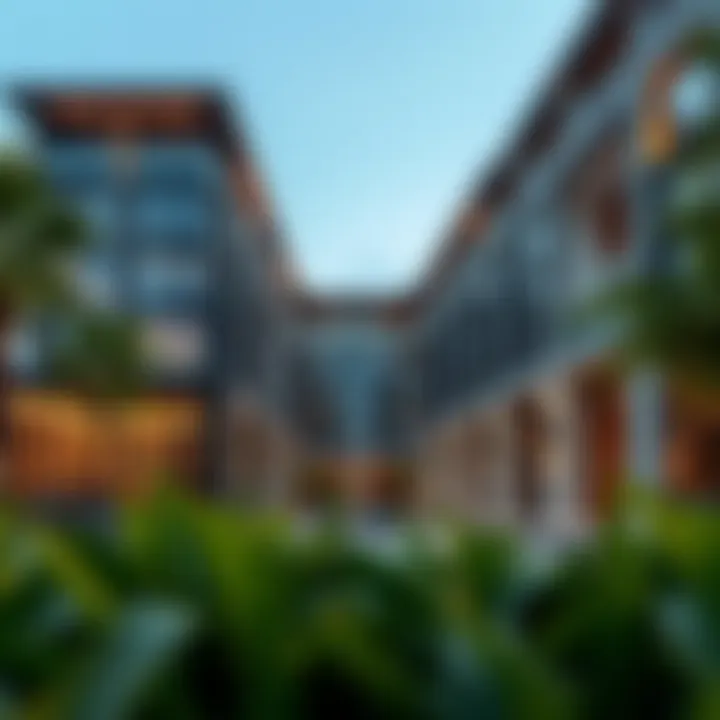
For further reading, explore the following links:
By immersing yourself in the intricacies of these legal frameworks, you can position yourself more advantageously in the tranquil wellness residences market.
Buying Process for Wellness Residences
Acquiring a tranquil wellness residence is a significant investment. As such, understanding the buying process is essential for potential homeowners and investors. The goal is not merely to own property; it's about embracing a lifestyle that prioritizes wellness and serenity in an increasingly chaotic urban landscape. The process involves various elements that require careful attention and consideration to make informed decisions.
Navigating the Market
When stepping into the market for wellness residences, it’s crucial to approach it with a clear mindset. Start by identifying specific neighborhoods that have a reputation for promoting tranquility and wellness. In Dubai, for example, areas like Jumeirah and Dubai Marina have seen a rise in such developments.
Engaging with local real estate agents who specialize in wellness properties can be immensely beneficial. They provide invaluable insights about current market trends, available amenities, and community vibes. Notably, buyers should also conduct independent research to compare listings, focusing on features that address physical and mental well-being. Look for properties that offer green spaces, fitness facilities, and proximity to nature; these elements significantly enhance living conditions.
Here's a brief overview of factors to consider while navigating the market:
- Property Features: Look beyond aesthetics; focus on wellness attributes like air quality, access to natural sunlight, and sound insulation.
- Amenities: Evaluate the type of amenities that are part of the residence. Does it have a spa? Are there jogging tracks or meditation gardens?
- Community Feel: A supportive neighborhood can enhance the wellness journey. Attend open houses or community events to gauge atmosphere.
Financing Options and Considerations
When it comes to financing a wellness residence, it’s important to explore various options available in the market. The financial landscape for real estate has evolved, especially in lucrative locations like Dubai. Various banks and financial institutions offer tailored mortgage solutions for wellness properties.
Some factors to consider while delving into financing options include:
- Down Payment Requirements: Generally, expect a range between 10-25% depending on the property type and location.
- Interest Rates: Shop around for competitive mortgage rates which can vary quite a bit. Even a small percentage difference can save thousands over the life of the loan.
- Loan Duration: Mortgages can range significantly in length. Shorter loans often mean higher monthly payments but less interest in total.
- Additional Expenses: Don’t overlook costs like maintenance fees, property taxes, and insurance. These can add a significant burden to your family budget.
- Investigating Grants or Subsidies: Some governments or agencies may offer support for buyers interested in wellness-focused properties, especially those that promote sustainability.
As buyers weigh their options, they should also keep in mind the overall long-term benefits of investing in wellness. The added value of a healthier lifestyle may very well outweigh the initial financial commitment.
"Buying a home is about creating a sanctuary, a space where every corner invites you to rejuvenate and unwind."
Through careful navigation and aggressive research, potential buyers can streamline the buying process, ensuring that they find not just a house, but a refuge that aligns with their wellness goals and aspirations.
Case Studies of Successful Projects
The exploration of successful projects in the realm of tranquil wellness residences sheds light on the tangible benefits and innovative ideas implemented across various developments. By examining real-world examples, we can uncover essential elements about design choices, community impact, and resident satisfaction. These case studies serve not just as inspirational models but also as learning platforms for investors, agents, and property managers.
Prominent Examples in Dubai
Dubai stands at the forefront of the wellness residence trend, boasting several properties that exemplify how tranquility can be woven into urban life. One shining example is the The Sustainable City, situated just outside the bustling city center. This project integrates eco-friendly architecture with wellness amenities, ensuring that residents enjoy a lifestyle centered around health and sustainability. The city boasts biophilic design elements, promoting harmony with nature through open spaces and gardens while encouraging active living with facilities such as jogging tracks and communal fitness areas.
Another notable development is Armani Residences, located in the Burj Khalifa. With a focus on luxurious wellness, these residences feature spa facilities and wellness centers within easy reach. The integration of high-end amenities with calm aesthetics creates a serene living environment that attracts health-conscious expatriates and investors seeking holistic living.
Moreover, Al Barari is another prime example, emphasizing nature and wellness. This expansive residential community combines high-end villas with lush greenery, designed to foster a sense of peace and community among neighbors. Residents appreciate the walking trails and tranquil lakes, making it a desirable haven for those looking to escape the urban stress.
Lessons Learned from Existing Developments
Analyzing these successful projects reveals several lessons that are crucial for future developments in the wellness residence sector:
- Community Engagement: Successful projects often foster a strong sense of community. Programs that encourage interactions, such as resident yoga classes or seasonal events, build bonds among inhabitants and enrich their lives.
- Adaptability of Space: It's essential for wellness residences to offer adaptable spaces. Flexible designs can accommodate various activities, from fitness workshops to meditation sessions, ensuring that the needs of a diverse population are met.
- Quality over Quantity: Well-designed wellness features often outweigh the number of amenities available. Creating few but exceptional offerings—whether a well-equipped gym or a high-end spa—can drive resident satisfaction more than simply having many standard facilities.
- Sustainability Initiatives: Properties that prioritize environmental responsibility tend to attract a more discerning clientele. From incorporating solar panels to utilizing recycled materials, these initiatives not only reduce ecological footprints but also appeal to buyers interested in sustainable living.
- Location Matters: The location of wellness residences significantly influences their appeal. Proximity to nature, parks, and serene environments can enhance the relaxation and rejuvenation experiences that residents seek.
"Lessons learned from existing developments inform us not just of what makes a project successful but also guide us in understanding the evolving needs of potential residents."
By harnessing the insights from these case studies, investors and property managers can make informed decisions that blend profitability with the vision of creating spaces that prioritize well-being and community in urban settings.
Epilogue
In wrapping up the discussion on tranquil wellness residences, it is vital to underscore their growing significance in modern urban settings, particularly in dynamic markets like Dubai. The evolution of these residences reflects a broader societal shift towards prioritizing health and well-being, marrying luxury living with holistic care. Properties designed around wellness offer more than just a roof over one’s head; they provide a sanctuary that nurtures both physical and mental health.
The benefits of these residences are manifold. For one, they promote a lifestyle that integrates fitness, relaxation, and mindfulness seamlessly into daily routines. High-demand amenities like fitness centers, spas, and green spaces create environments conducive to overall wellness. Secondly, buyers are increasingly seeking out these features as awareness surrounding mental health increases, driving up demand for properties that facilitate a balanced lifestyle.
Additionally, investors in this space are met with increasing opportunities as the market trends shift. There's a palpable interest in developing tranquil spaces that not only cater to affluent buyers but also appeal to those who seek a healthier, more sustainable way of living. The potential for investment is profound, as health-oriented properties tend to retain their value and appeal over time.
Ultimately, the rise of tranquil wellness residences underscores a critical change in our approach to urban living. As cities become more congested and stressful, the demand for these peaceful havens will only grow. It is imperative for investors, property managers, and real estate agents to recognize this trend and consider it in their strategic planning and decision-making.
Summary of Insights
- Holistic Living: Tranquil wellness residences combine luxury with health-centric design, attracting a demographic that values well-being alongside comfort.
- Market Dynamics: The burgeoning market for wellness-focused properties is indicative of changing consumer preferences, with a strong demand driving potential for lucrative investments.
- Sustainable Development: Integrating sustainable practices in construction and design not only caters to the health of residents but also benefits the environment, an essential consideration for future development.
- Community Focus: These residences foster community engagement and social interaction, promoting mental well-being and creating supportive networks among residents.
- Innovative Features: Advanced technologies and innovations in wellness design continually evolve, enhancing the attractiveness and functionality of these residences.
By emphasizing wellness, these residences not only redefine luxury living but also establish new standards for quality of life in urban areas.



